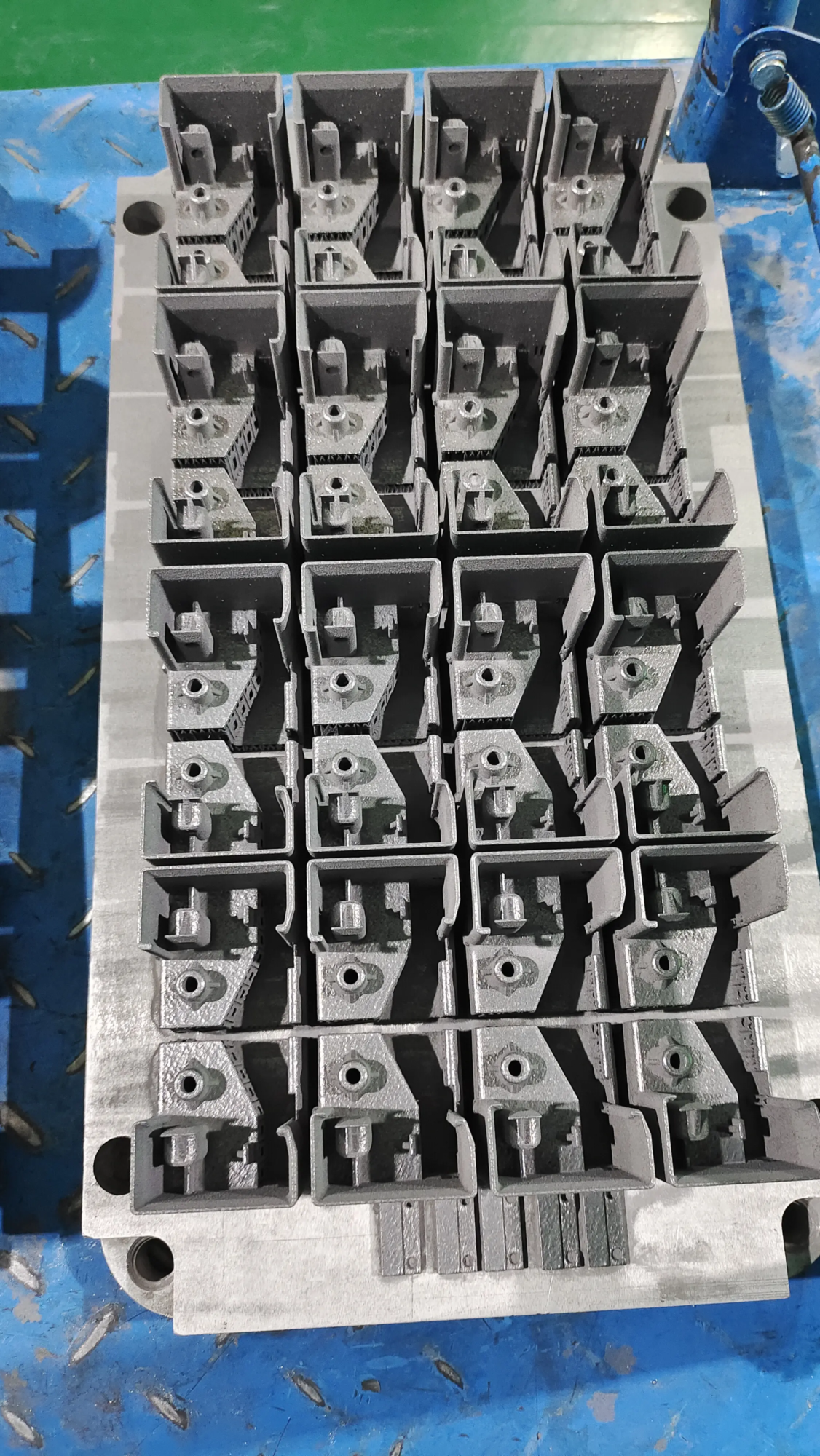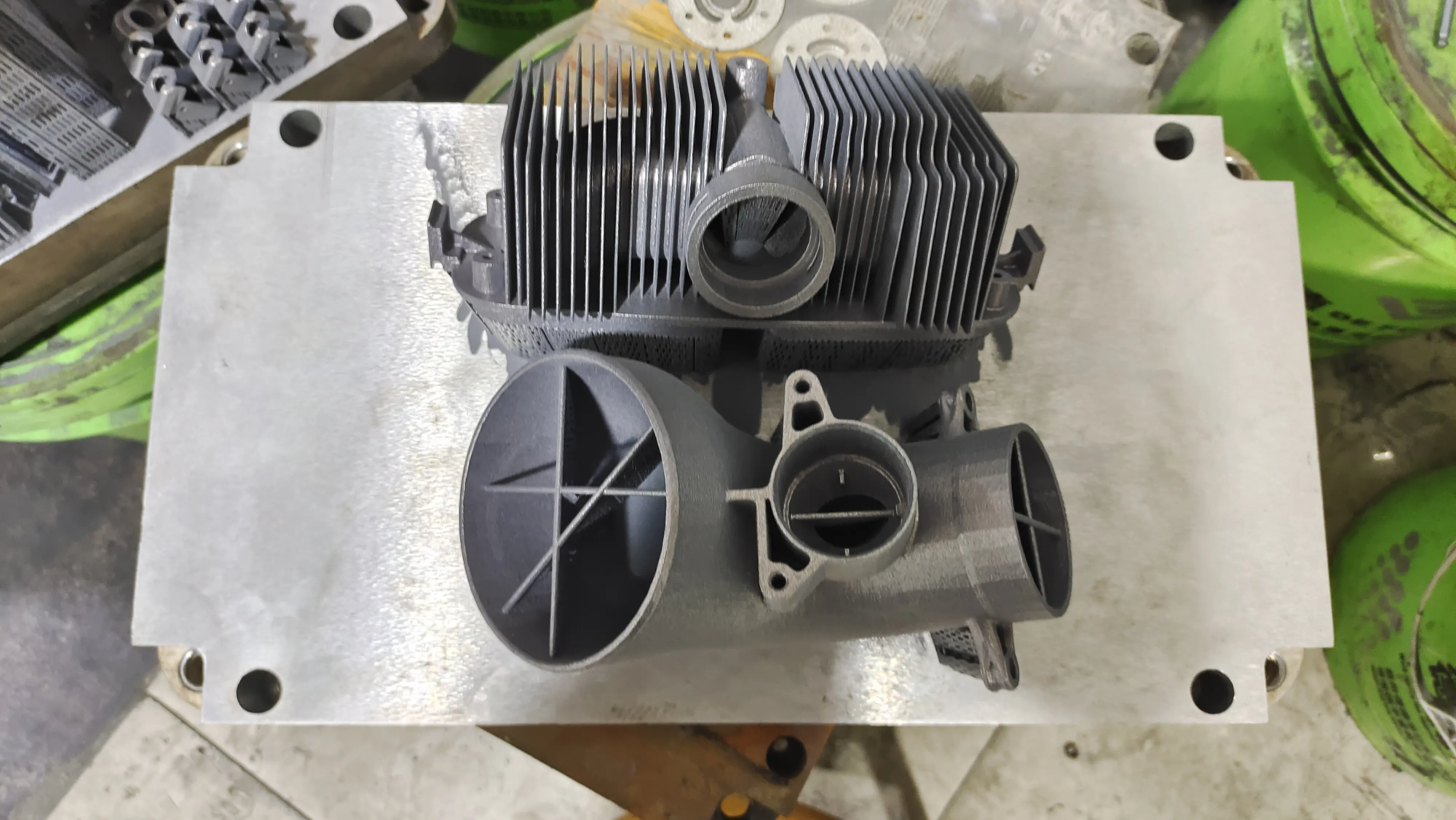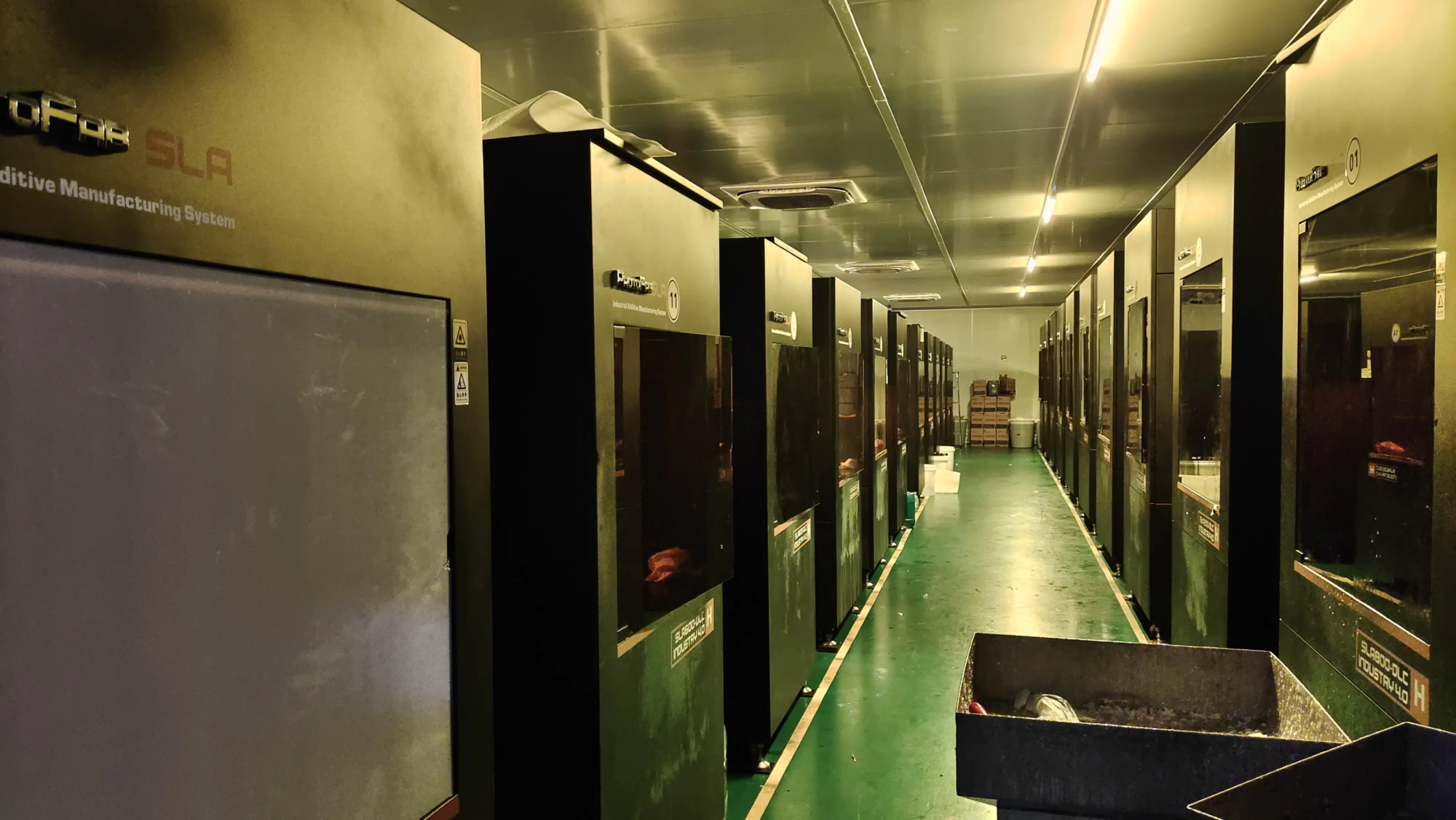Silent Guardian: Prioritize every layer of security in 3D printing
The world of 3D printing or additive manufacturing (AM) has great potential. From complex aerospace components to life-saving medical implants, the ability to create complex geometric shapes directly from digital blueprints is revolutionary. However, this powerful technology is not without its inherent risks. Ensuring a safe 3D printing practice is more than just a regulatory box to tick; it is the fundamental cornerstone of responsible manufacturing, protecting the integrity of people, equipment and the final product. At Greatlight, as a leader in rapid prototype and production-grade metal additive manufacturing, we learned that safety is not an afterthought – it is carefully woven to every stage of the process.
While the perception of 3D printing security often revolves around consumer desktop FDM (fusion deposition modeling) printers and concerns such as hot ends or smoke, the landscape becomes more complex, especially when venturing into industry and industrial fields. Metal 3D printingour core expertise. Security must be addressed in a whole, including the entire workflow – from design verification to final partial delivery.
Phase 1: Laying the Safety Foundation – Preprinting and Design
Safety begins long before laser shooting or first layer deposition:
- Material knowledge is crucial: Understanding the properties of selected materials – whether it is SLS’ nylon composites, resins for SLAs or high-performance metal alloys such as titanium, Inconel or aluminum for SLM (selective laser melting) – is crucial. Each material has unique hazards:
- Metal Powder: Extra caution is required due to flammability, explosiveness (especially fine particles suspended in the air) and potential health risks. Greglight’s closed, inert gas environment and strict powder handling protocols (including professional PPE and explosion-proof equipment) are not negotiable.
- Polymers and resins: Volatile organic compounds (VOCs) and ultrafine particles (UFPs) can be emitted during printing. Proper ventilation (usually HEPA filtration) and material-specific PPE are crucial.
- Security Design (DFAM + DFS): In addition to design functionality and manufacturing (DFAM), design security (DFS) is crucial. This involves predicting potential failure points under pressure, ensuring adequate thermal management to prevent warping or internal stress in the metal, and designing support structures that can be safely removed without damaging the operator or parts. Our experienced engineering team rigorously analyzes the design of these factors.
- Machine Setup and Calibration: Accurate calibration of laser power, beam focus, reconfiguration blades (in SLM), platform platform and environmental controls (oxygen levels in the build chamber) is crucial. Miscalibration can lead to defective parts, equipment damage, and may even lead to unsafe conditions such as gas leakage or uncontrolled particle release. Greatlight’s investment in state-of-the-art SLM equipment includes strict calibration routines and automatic monitoring systems.
Phase 2: Controlled Crucible – Safety during printing
This is where the potential hazards are most dynamic, especially metal AM:
- Included environment: Industrial metal 3D printers, such as Greatlight’s advanced SLM systems, operate in sealed chambers filled with inert argon or nitrogen. This is crucial for preventing oxidation/combustion of metal powders and controlling melt pool dynamics. Continuous gas monitoring ensures a safe atmosphere.
- High-energy resources: SLM uses high power lasers (fiber lasers are typically > 500W). Ensure complete housing integrity with a secure interlocking to prevent accidental exposure to laser radiation. Maintenance follows a strict locking tagout (Loto) procedure.
- Thermal management and process monitoring: Monitoring indoor temperature is essential to prevent thermal runaway. Advanced process monitoring systems track melt pool stability and layer quality in real time to identify abnormalities that may be upgraded to harmful conditions or defective parts.
- Powder treatment (during the construction process): The movement of the Recoater Blade diffusion powder layer requires precise engineering to minimize powder turbulence and prevent sparks from occurring in the chamber. The system automatically sifts the powder to maintain optimal particle size and flow characteristics.
Phase 3: Beyond the Build Board – Post-processing Security
After the printing work is completed, the safety journey will continue. The rough parts leaving the machine need to be carefully processed and completed:
- Depowdering & Initial Processing: The metal parts are filled with loose potentially reactive powder. Greatlight performs outstandingly in dedicated, dedicated sites for local exhaust ventilation (LEV), dedicated tools and complete PPE (respirators, gloves, eye protection). The parts may still be hot or remain stressed.
- Support removal: Removal of metal support structures is a high-risk operation due to sharp edges and stress. This requires skilled technicians with the use of appropriate tools (CNC machining, EDM Wirsawing) for guarding, PPE and rocking stability, a key area of our one-stop post-processing expertise.
- Heat treatment: Metal parts usually require ease of pressure, heat, or static pressure (hook) or solution annealing. Operating industrial furnaces and handling thermal parts involve serious thermal hazards and require specialized training and equipment.
- Processing and finishing: CNC machining, grinding, polishing, EDM or surface treatments (such as anodizing) introduces traditional processing hazards (chips, coolants, sparks, chemicals), as well as residual powder contamination problems. It is crucial to have proper control of isolating areas.
- Waste management: Metal powder waste, support structures without shearing and contaminated cleaning materials require safe, compliant disposal procedures and compliance with environmental regulations.
GRESTHILE: Your partners in the production of safe, precise metals in rapid prototyping and production
At Greatlight, we not only make parts. We design trust and security throughout the entire additive manufacturing life cycle. Our Commitment to Being "One of the best rapid prototyping companies from China" Built on this basis:
- Advanced, securely integrated SLM technology: Our facility home cutting-edge SLM printers feature a fully enclosed, inert-atmosphere chamber, automated powder handling module, real-time process monitoring and a comprehensive safety interlocking system.
- Expertise on hazardous substance treatment: Our team has deep expertise in safe and effective management of reactive metal powders and complies with international safety standards.
- Comprehensive one-stop post-processing: By integrating expert post-processing (CNC machining, EDM, heat treatment, surface treatment) under one roof, we eliminate the safety risks associated with third-party processing and ensure consistent quality control throughout the workflow.
- Strict protocols and training: Continuous operator training, strict compliance with SOP and a universal safety culture in our operations. We regularly review and improve security systems.
- Material mastery and customization: We specialize in handling various materials ("Most materials can be customized") and consider performance and manufacturability and provide advice on the safest and most suitable alloys for their application.
Security in 3D printing, especially high-risk metal AM, is not optional. This is a key engineering discipline. Working with experienced providers, such as Greatlight, ensures that your next rapid prototype project advances innovation without damaging the well-being of people or the environment.
Conclusion: Safety – Invisible Layer of Excellence
The transformational potential of 3D printing is undeniable. However, realizing that this potential sustainability and responsibly depends on a firm commitment to security. From the subtle dangers of reactive metal powders and high-energy lasers to the ongoing hazards of post-processing operations, the risks of the additive manufacturing journey are related to risks that require expert management. Choosing a partner like Greatlight, equipped with advanced SLM technology, in-depth material knowledge, strict security protocols and mastery of internal post-processing, is more than just a procurement decision – it is an investment in integrity. We ensure that each layer added not only contributes to the structural integrity of your part, but also contributes to the foundation pillars of safe, reliable and outstanding manufacturing. You have a lot of innovations.
FAQ: Safety of 3D printing
Q1: Is metal 3D printing (SLM/SLS) safe for operators?
A: Metal powder treatment can pose a major hazard (fire, explosion, inhalation). However, with strict protocols – fully enclosed inert gas printers, dedicated PPE (respirators, gloves, suits), explosion-proof environment, rigorous training and dedicated powder handling stations – professional operators are protected. Greatlight implements all these measures in our controlled facilities and keeps the process safe when properly managed.
Question 2: What is the biggest security risk in FDM/desktop 3D printing?
Answer: Key risks include:
- high temperature: Thermal nozzles and heating beds can cause severe combustion.
- Flue gas and pellets: The emission of melted thermoplastics (UFP/VOC) depends on the possible hazards of the material (e.g., ABS, nylon). Use in well-ventilated areas or in HEPA filters.
- Electrical hazards: Correctly ground and avoid modifications to electrical components.
- Fire risk: Never leave the printer unattended; use models with thermal runaway protection and fire detectors/suppression nearby.
Q3: How does Greatlight ensure that the final metal part is free of pollutants?
A: Our multi-step process ensures partial purity:
- Use special tools to thoroughly and thoroughly in a dedicated ventilation station.
- Various post-treatment steps such as CNC processing and EDM inherently remove surface illustration powder.
- Ultrasonic cleaning or chemical cleaning bath.
- Heat treatments (such as thermal isostatic pressure) (hook joint) also help to fuse internal voids and consolidate the material. Strict inspection protocols verify cleanliness.
Question 4: What safety certifications or standards do professional 3D printing services comply with?
A: Reputable services follow strict internal agreements that are usually based on or exceed:
- OSHA/Local Occupational Health and Safety Regulations: Mandatory protection of workers.
- NFPA Standard: Especially NFPA 484 (combustible gold) of metal powders.
- ATEX/IECEX standards: Equipment for explosive atmospheres (powder treatment areas).
- ISO 45001: Occupational health and safety management system.
- Substance-specific treatment guide: From powder manufacturers.
Gremply is committed to meeting and exceeding relevant safety standards.
Q5: Is the gas used in metal 3D printing safe?
A: Argon and nitrogen (inert gas) are non-flammable and non-toxic. itself. However, risks include:
- asphyxia: Leakage in the enclosed space can replace breathable air. Gas monitoring and ventilation are crucial.
- high pressure: Storage/use under pressure; mechanical hazards during cylinder changes require training.
- Process by-products: The interaction of lasers with metal vapors can produce small amounts of other compounds (e.g., ozone, metal oxide particles). Room extraction and filtration management. Greatlight Systems is designed to mitigate all these risks.
Question 6: Why is internal post-processing crucial to safety?
A: Transfer parts of the processed parts, especially those containing loose metal powder or sharp support, pose a huge harm (dust release, injury, improper). Greatlight’s integrated one-stop service completes the entire workflow – gradually eliminating, supporting disassembly, heat treatment, finishing finishes, minimizing external processing risks and ensuring seamless quality control in our controlled, safe environment.





